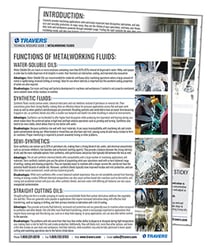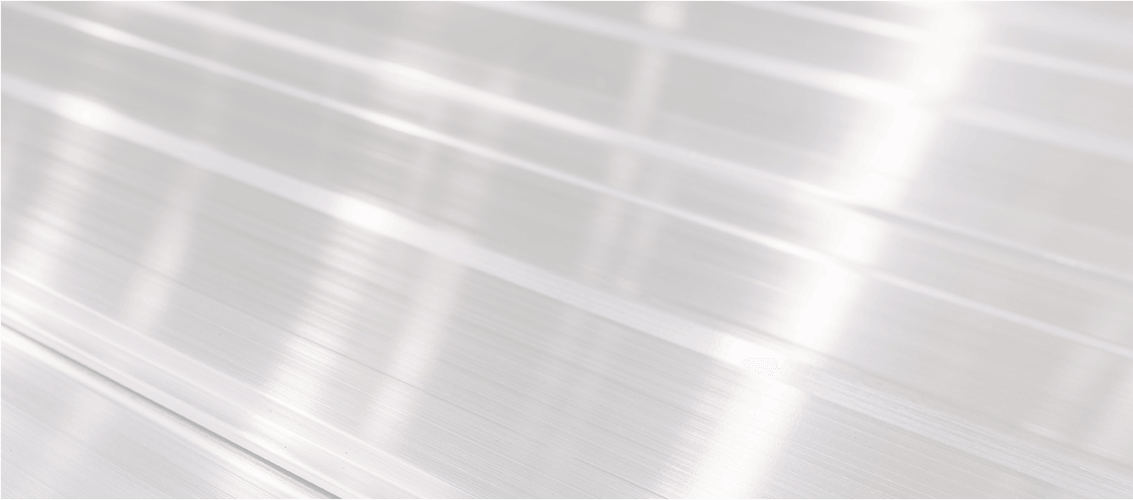
1. Concentration:
The concentration of the coolant mix in the sump can change over time, therefore it is important to consistently monitor the coolant mixture to maintain the correct concentration. This can easily be accomplished by using a refractometer. To measure the current concentration in the sump, pour a little used coolant into a styrofoam or paper cup and let it sit for 10 minutes. After the coolant has separated poke a hole in the side of the cup and use the coolant that streams out to take your reading. This will insure that the refractometer reading is accurate.
2. Remove Tramp Oil:
When tramp oils fall from the machine and into the sump they form a floating seal that prevents air from reaching the coolant underneath. This creates an ideal setting for anaerobic bacteria that thrive in areas devoid of oxygen, it is the growth of these organisms leads to rancidity and coolant spoilage. To prevent rancidity and coolant separation remove damaging tramp oil with a wheel skimmer. Remember that wheel skimmers can only be run when the coolant is not in use.
3. Aerate your coolant:
Many types of bacteria and fungus flourish in environments without oxygen; therefore it is important to aerate the coolant regularly. By simply running the machine a few hours a day you will prolong the life of the coolant. If it is not possible to run the machine every day then consider installing an aerator to aerate the sump when it is not in use.
4. Mix your coolant properly:
A properly made coolant mixture is much more effective than an improperly mixed one so when mixing water and coolant concentrate always remember the word OIL (Oil in Last). This will remind you that water should never be added to concentrated coolant; instead always start with water and then add the coolant concentrate to the water. It is best to mix the water and coolant concentrate before adding it to the sump. If the coolant is being dispensed from a 55-gallon drum consider the use of drum mixer. This tool makes it easy to make the right coolant mixture every time.
5. Add make-up coolant carefully:
When you are adding make-up coolant to the sump never add straight water or coolant concentrate to the sump. Doing this will throw off the concentration of the coolant mixture. If the coolant mix in the sump is too concentrated then add a make-up coolant mix that is less concentrated and if the coolant mix in the sump is not concentrated enough then add a make-up coolant mix that is more concentrated. A good rule of thumb is the 15 principle: if you initially charge with a 20:1 mix and the coolant in the sump is now too concentrated then add a 35:1 mix. After adding makeup run the sump for a few minutes before taking another refractometer reading. Keep repeating these steps until you have reached the initial 20:1 concentration.Tech Team Tip:
In addition to above, clean the sump regularly and remove chips and debris that take up space in the sump and reduce the amount of coolant that it can hold, thus reducing the coolant’s beneficial qualities such as lubricity and rust protection. These contaminants also provide breeding grounds for bacteria and fungus so it is important to regularly clean the chips and debris out of the sump when the sump is not in use. Coupling the skimmer with an automatic timer from a hardware store will allow it to operate during the off hours. Typically, a wheel skimmer only needs to operate one or two hours to completely remove tramp oils from the surface of a sump.
Need More Assistance? Contact our Tech Team at tech@travers.com or complete a technical support request here.
A portion of above appears courtesy of ITW Rocol
WANT TO LEARN MORE?
We believe the Right Tool Is Everything™, and we strive to share our experience and expertise in an effort to ensure you select the right tool for your application, follow best practices, and can push your productivity and efficiency further. Our Metalworking Fluids Guide includes critical information that can extend the life of your coolant and more.
 Download the guide by clicking below. By downloading, you'll learn about:
Download the guide by clicking below. By downloading, you'll learn about:
- The functions of varying metalworking fluids
- Troubleshooting your metalworking fluids
- Optimal use of metalworking fluids in tapping applications
- Rustlick brand products selection guide
- ValCool brand products selection guide



